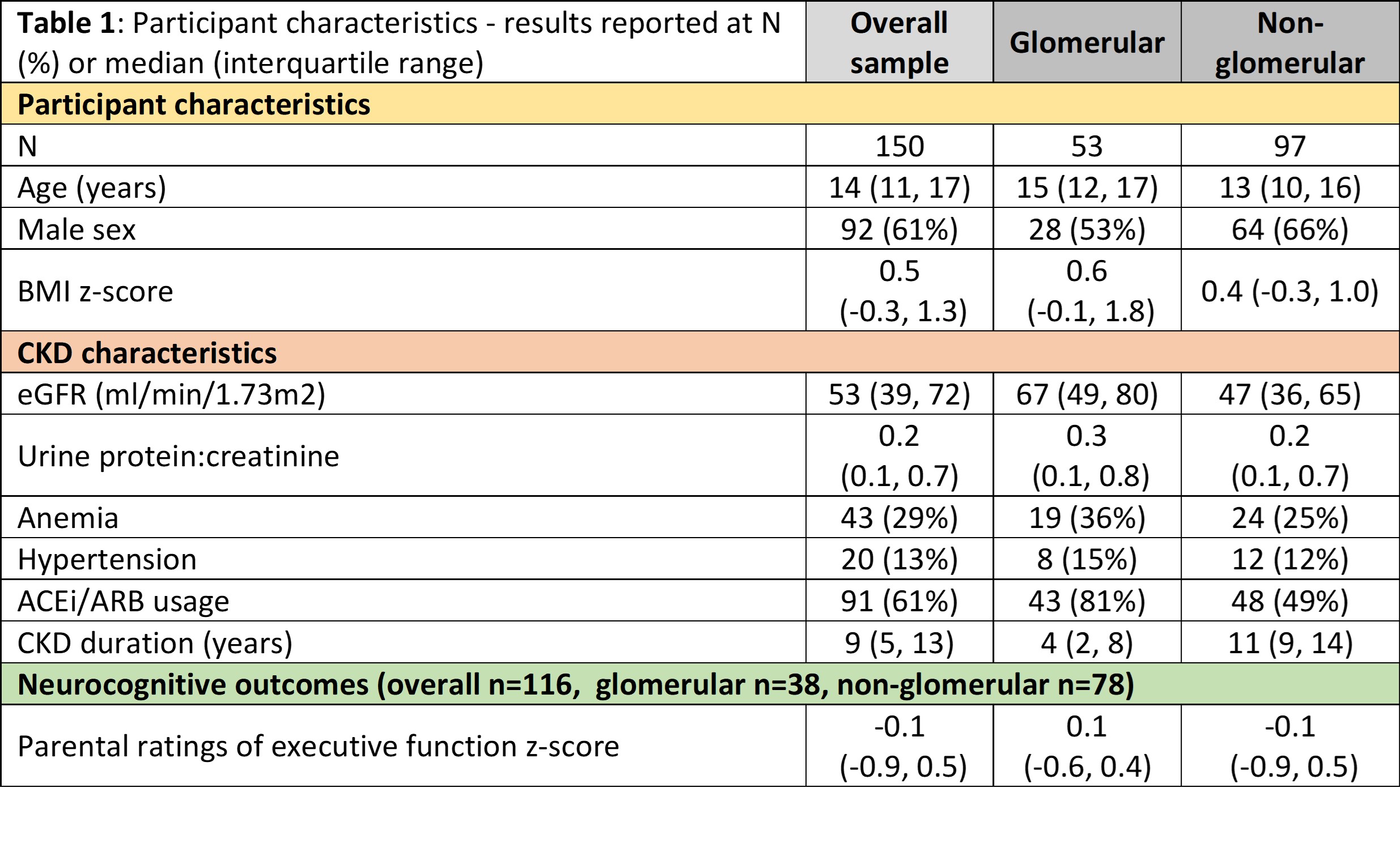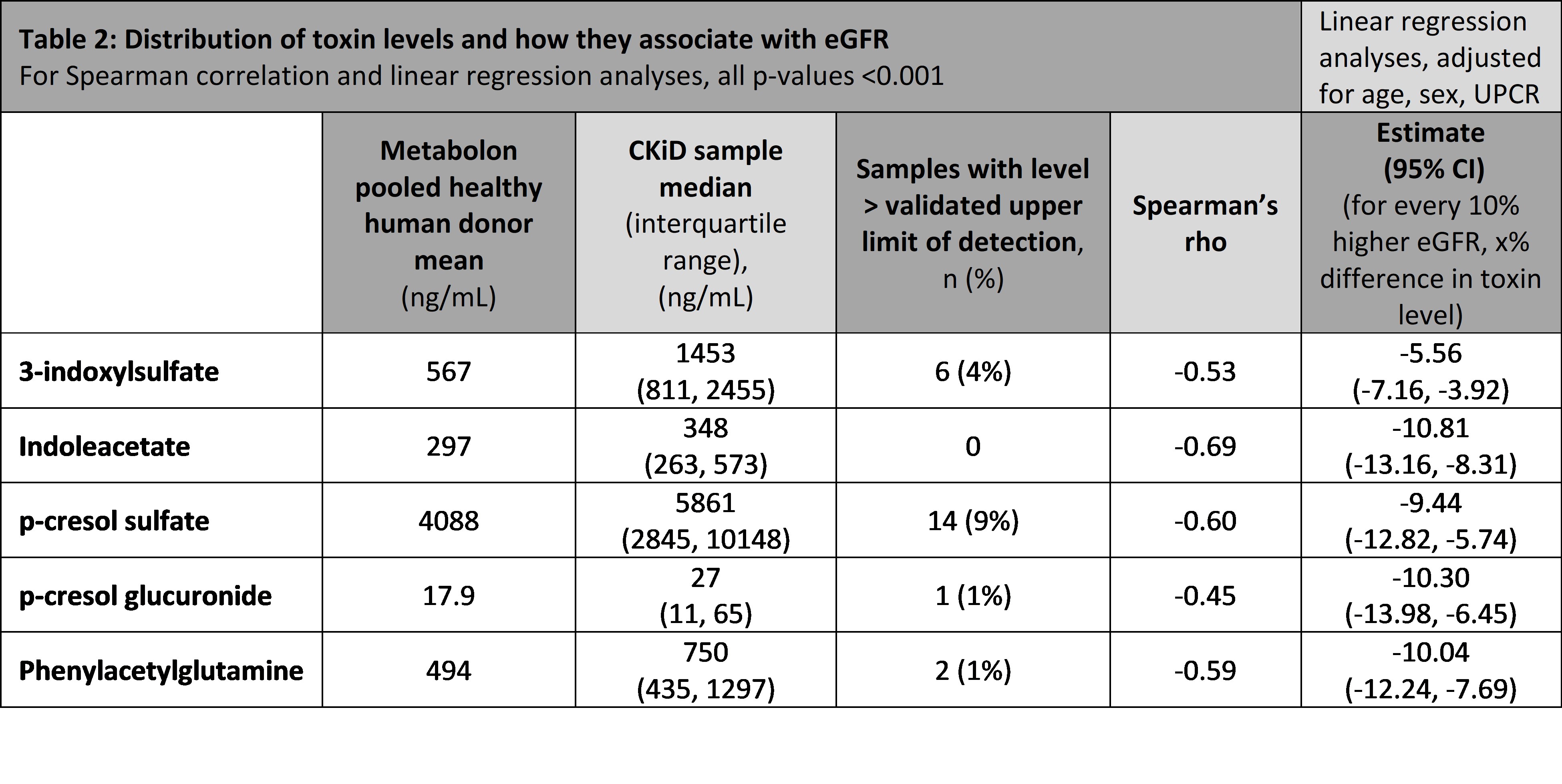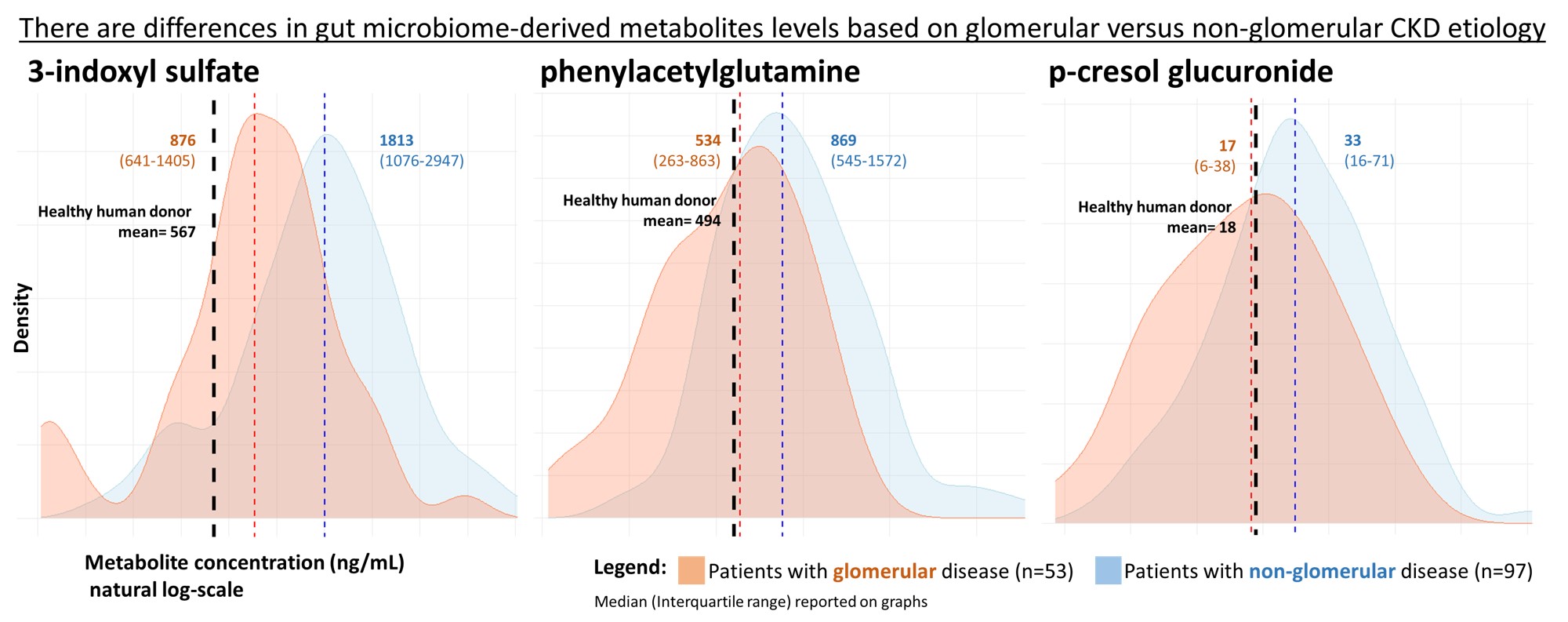Nephrology
Session: Nephrology 1
5 - Investigation of a Targeted Panel of Gut Microbiome-Derived Toxins in Children with Chronic Kidney Disease
Saturday, May 4, 2024
3:30 PM - 6:00 PM ET
Poster Number: 5
Publication Number: 5.1439
Publication Number: 5.1439

Mina Ebrahimi (she/her/hers)
Medical Student
Drexel University College of Medicine, United States
Presenting Author(s)
Background: The gut-kidney axis is increasingly implicated in chronic kidney disease (CKD) morbidity. We describe how a panel of gut microbiome-derived metabolites related to kidney function and neurocognitive outcomes in children with CKD. The panel consists of indoleacetate (IAA), 3-indoxylsulfate (I3S), p-cresol glucuronide (PCG), p-cresol sulfate (PCS), and phenylacetylglutamine (PAG).
Objective: We described circulating levels of five gut microbiome-derived metabolites and how they relate to kidney function and neurocognitive outcomes in children with CKD.
Design/Methods: The Chronic Kidney Disease in Children (CKiD) cohort is a North American multicenter prospective cohort that enrolled children aged 6-months to 16-years with estimated glomerular filtration rate (eGFR) 30-89ml/min/1.73m2. Data from the 2-year study visit were used for this analysis. Metabolite quantification (Metabolon Inc., Durham, NC) was performed with ultra-high-performance liquid chromatography/tandem mass spectrometry. Parental ratings of executive function were assessed with the Behavior Rating Inventory of Executive Function and Delis-Kaplan Executive Function System Tower Subtest. Linear regression analysis was used to examine the association of metabolite levels with eGFR, CKD etiology, and executive function z-score, adjusted for age, sex and urine protein:creatinine (UPCR). Metabolite levels, eGFR and UPCR were natural-log transformed for linear regression analyses.
Results: Participant characteristics are shown in Table 1. Metabolite distributions and associations with eGFR are reported in Table 2. Metabolon pooled healthy human donor plasma sample means are also reported. All metabolite levels were significantly and inversely correlated with eGFR (Spearman’s rho -0.45 to -0.69). PCS levels exceeded the quantification threshold in 9% of participants. Children with non-glomerular CKD had significantly higher levels of I3S, PCG, and PAG (Figure 1). None of the metabolites were significantly associated with executive function z-score (Spearman’s rho: IAA=-0.23, I3S=-0.01, PCS=-0.08, PCG=-0.12, PAG=-0.12).
Conclusion(s): Children with CKD have high levels of circulating gut microbiome-derived metabolites. The levels of these substances are strongly correlated with eGFR. There appears to be differences in metabolite level based on glomerular versus non-glomerular etiology, even accounting for the differences in eGFR between these two subgroups. In this sample, we did not detect any associations between these metabolite levels and parental ratings of executive function.



